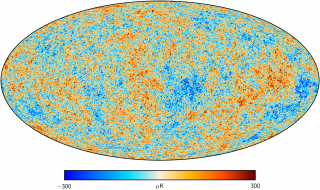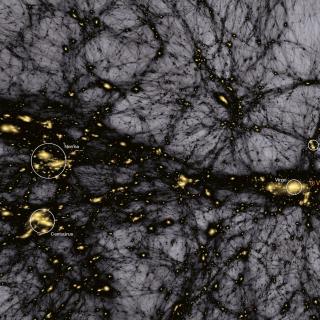Bibcode
Mandolesi, N.; Maris, M.; Marleau, F.; Marshall, D. J.; Martínez-González, E.; Masi, S.; Matarrese, S.; Matthai, F.; Mazzotta, P.; Meinhold, P. R.; Melchiorri, A.; Melin, J.-B.; Mendes, L.; Mitra, S.; Miville-Deschênes, M.-A.; Montier, L.; Morgante, G.; Munshi, D.; Natoli, P.; Nørgaard-Nielsen, H. U.; Noviello, F.; Osborne, S.; Pajot, F.; Paoletti, D.; Partridge, B.; Pearson, T. J.; Perdereau, O.; Perrotta, F.; Piacentini, F.; Piat, M.; Pierpaoli, E.; Piffaretti, R.; Platania, P.; Pointecouteau, E.; Polenta, G.; Ponthieu, N.; Popa, L.; Poutanen, T.; Pratt, G. W.; Prunet, S.; Puget, J.-L.; Rachen, J. P.; Rebolo, R.; Reinecke, M.; Remazeilles, M.; Renault, C.; Ricciardi, S.; Ristorcelli, I.; Rocha, G.; Rosset, C.; Rossetti, M.; Rubiño-Martín, J. A.; Rusholme, B.; Sandri, M.; Savini, G.; Scott, D.; Starck, J.-L.; Stivoli, F.; Stolyarov, V.; Sudiwala, R.; Sunyaev, R.; Sutton, D.; Suur-Uski, A.-S.; Sygnet, J.-F.; Tauber, J. A.; Terenzi, L.; Toffolatti, L.; Tomasi, M.; Tristram, M.; Valenziano, L.; Van Tent, B.; Vielva, P.; Villa, F.; Vittorio, N.; Wandelt, B. D.; Weller, J.; White, S. D. M.; Yvon, D.; Zacchei, A.; Zonca, A.; Luzzi, G.; Macías-Pérez, J. F.; Maino, D.; Lilje, P. B.; Linden-Vørnle, M.; López-Caniego, M.; Le Jeune, M.; Leach, S.; Leonardi, R.; Liddle, A.; Lamarre, J.-M.; Lasenby, A.; Lawrence, C. R.; Lagache, G.; Knoche, J.; Kunz, M.; Kurki-Suonio, H.; Juvela, M.; Keihänen, E.; Khamitov, I. et al.
Referencia bibliográfica
Astronomy and Astrophysics, Volume 550, id.A129, 20 pp.
Fecha de publicación:
2
2013
Revista
Número de citas
78
Número de citas referidas
76
Descripción
We examine the relation between the galaxy cluster mass M and
Sunyaev-Zeldovich (SZ) effect signal DA2
Y500 for a sample of 19 objects for which weak lensing (WL)
mass measurements obtained from Subaru Telescope data are available in
the literature. Hydrostatic X-ray masses are derived from XMM-Newton
archive data, and the SZ effect signal is measured from Planck all-sky
survey data. We find an MWL - DA2
Y500 relation that is consistent in slope and normalisation
with previous determinations using weak lensing masses; however, there
is a normalisation offset with respect to previous measures based on
hydrostatic X-ray mass-proxy relations. We verify that our SZ effect
measurements are in excellent agreement with previous determinations
from Planck data. For the present sample, the hydrostatic X-ray masses
at R500 are on average ~ 20 percent larger than the
corresponding weak lensing masses, which is contrary to expectations. We
show that the mass discrepancy is driven by a difference in mass
concentration as measured by the two methods and, for the present
sample, that the mass discrepancy and difference in mass concentration
are especially large for disturbed systems. The mass discrepancy is also
linked to the offset in centres used by the X-ray and weak lensing
analyses, which again is most important in disturbed systems. We outline
several approaches that are needed to help achieve convergence in
cluster mass measurement with X-ray and weak lensing observations.
Appendices are available in electronic form at http://www.aanda.org
Proyectos relacionados

Anisotropía del Fondo Cósmico de Microondas
El objetivo general de este proyecto es determinar y estudiar las variaciones espaciales y espectrales en la temperatura del Fondo Cósmico de Microondas y en su Polarización en un amplio rango de escalas angulares que van desde pocos minutos de arco hasta varios grados. Las fluctuaciones primordiales en la densidad de materia, que dieron origen a
Rafael
Rebolo López

Cosmología con Trazadores de la Estructura a Gran Escala del Universo
El Fondo Cósmico de Microondas (FCM) contiene la información estadística de las semillas primigenias que han dado lugar a la formación de todas las estructuras en el Universo. Su contrapartida natural en el Universo local es la distribución de las galaxias que surgen como resultado del crecimiento gravitatorio de aquellas fluctuaciones de densidad
FRANCISCO SHU
KITAURA JOYANES